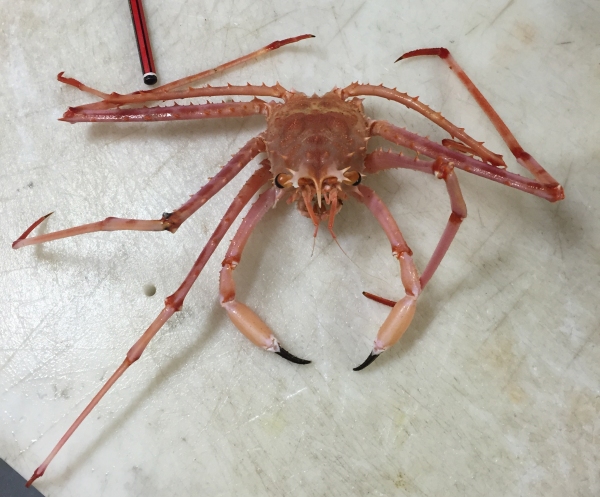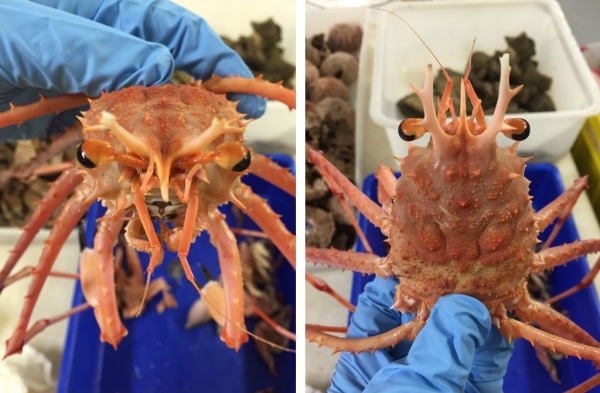You may remember our critter of the week number 175 – Psolus antarcticus (Philippi, 1857), the limpet-like sea cucumber? This was featured while half of our collection team were at sea investigating marine food webs on the Chatham Rise. While they did come across some of these sea cucumbers (to the bewilderment of some people who thought they may be a type of ascidian or even a nudibranch!), we also came across the spiny, long-legged antlered crab.
Critter of the Week number 175 – Psolus antarcticus (Philippi, 1857)
Carrier crabs
Dagnaudus petterdi (Grant, 1905), also known as the antlered crab, is a member of the Homolidae family which contains 15 genera known as carrier crabs. Carrier crabs have the ability to hold their last pair of walking legs above their carapace in a sub-dorsal position and use them to carry other objects - even other invertebrates such as sea urchins, corals and sponges. This could be as an anti-predatory behavior or perhaps food-carrying. See this video of carrier crabs in action:
Adaptations
The antlered crab lives on the continental slope, between 180 to 540 m depth, and are distributed on the East Coast, Northland to Fiordland and Snares Islands, New Zealand. They are also found in Australia and New Caledonia. Its carapace is covered in tubercles and spines, and has characteristic spiny long thin walking legs, which are probably used to hold itself above the soft mud on which it lives. In addition to having the ability to lift its back legs over its carapace, the legs of Dagnaudus petterdi feature distinctive small hooks, which help it grasp objects.
References:
Tracey, D.M.; Anderson, O.F.; Naylor, J.R. (Comps.) (2011). A guide to common deepsea invertebrates in New Zealand waters. New Zealand Aquatic Environment and Biodiversity Report No. 86. 317 p.



